Fiber is a fundamental part of a healthy diet, often overlooked in favor of other nutrients such as protein or vitamins. However, the benefits of a high-fiber diet are substantial and can have profound effects on health, including improved digestion, weight management, and lower risk of developing various chronic diseases.
Dietary fibers, found primarily in fruits, vegetables, whole grains, and legumes, are known for their ability to improve bowel movements and are categorized into two types: soluble and insoluble. Soluble fibers help to lower cholesterol and stabilize blood sugar levels, while insoluble fibers aid in preventing constipation by helping waste pass through the digestive system more efficiently.
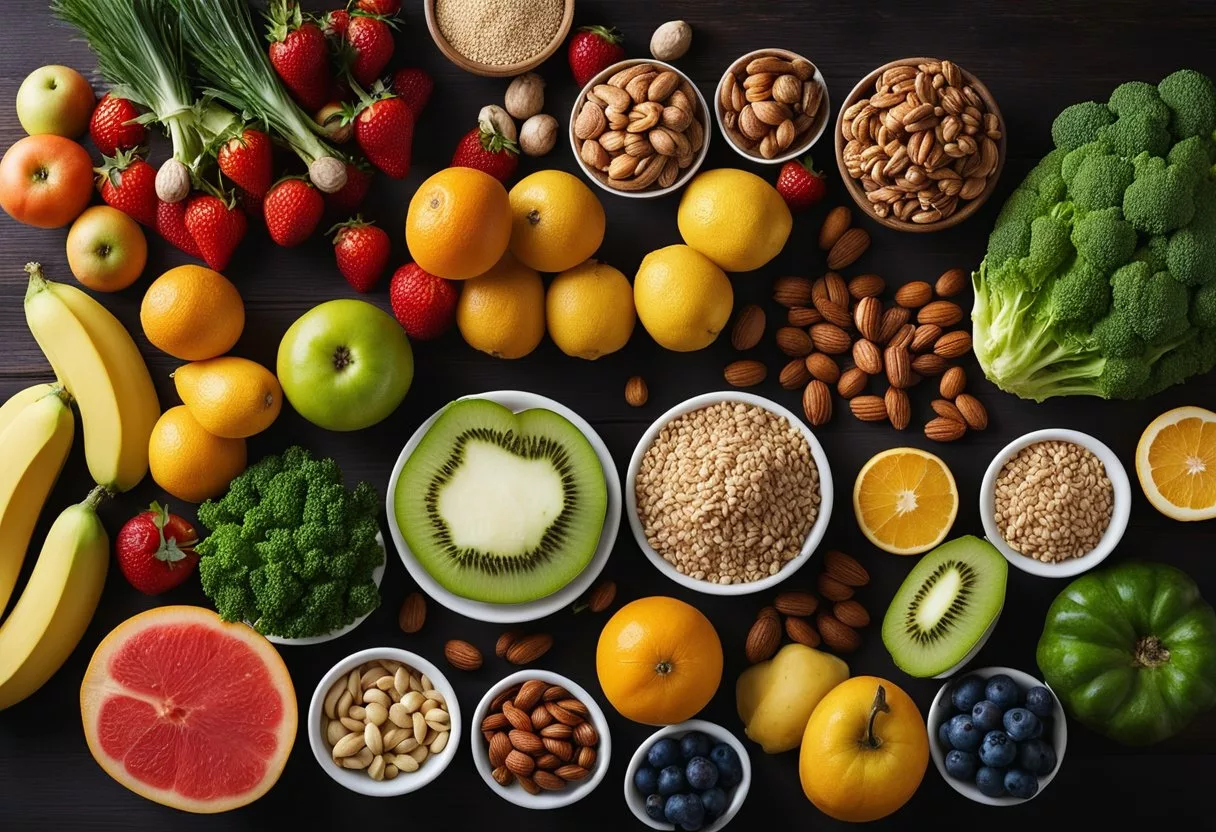
Increasing the intake of high-fiber foods is a straightforward strategy for achieving a healthier diet. A diverse array of high-fiber options allows flexibility and variety, which makes adhering to a high-fiber diet more enjoyable and sustainable over time. It’s essential to recognize that integrating fiber into one’s diet should be done gradually, accompanied by an increase in water intake, to allow the body to adjust to the dietary changes.
Key Takeaways
- Fiber is vital for digestive health and plays a role in disease prevention.
- A variety of high-fiber foods should be included in a balanced diet.
- Gradually increasing fiber intake and consuming more water is advisable.
Understanding Fiber
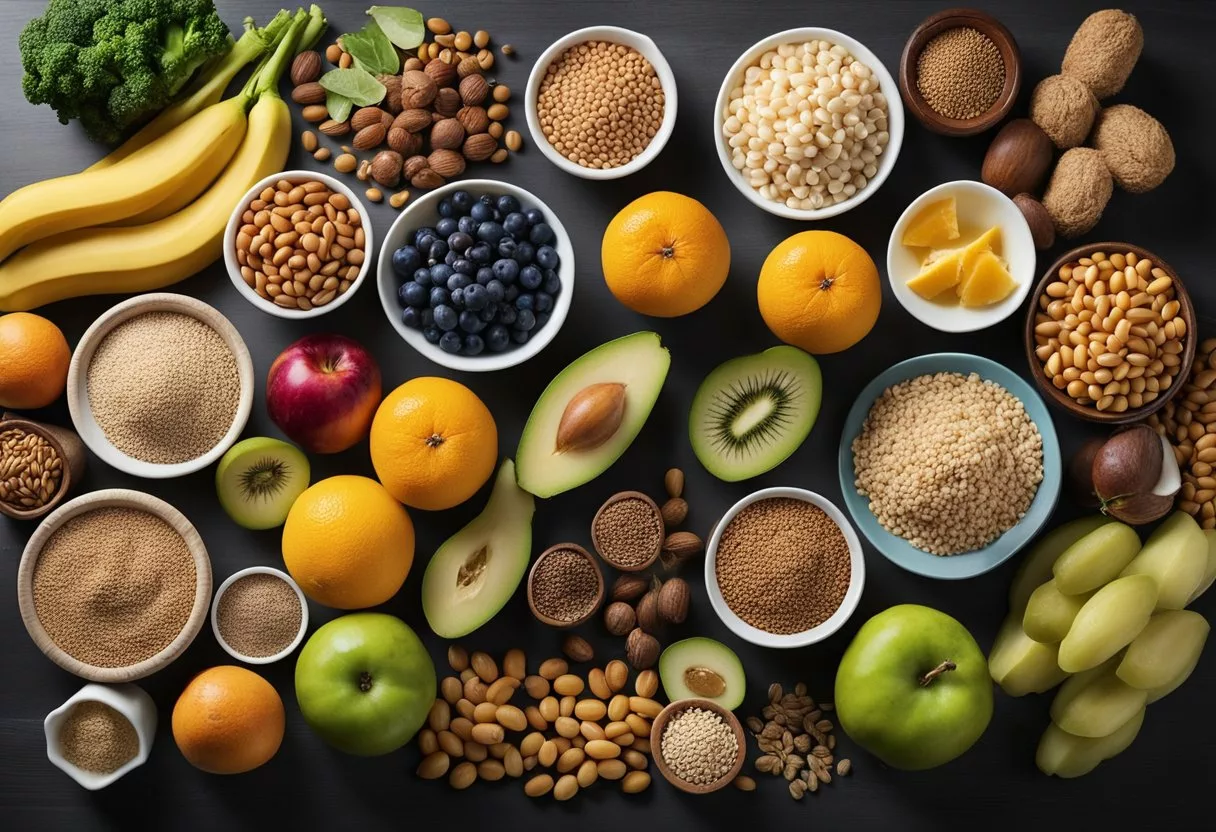
Dietary fiber is a crucial component of a healthy diet, known for its significant roles in digestive health and chronic disease prevention. This section demystifies the types of fiber, underscores their health benefits, and delineates the recommended intake guidelines.
Types of Fiber
Soluble Fiber: This type absorbs water to form a gel-like substance inside the digestive system. Foods high in soluble fiber include oats, nuts, beans, lentils, apples, and blueberries. Soluble fiber helps to lower cholesterol levels and regulate blood sugar.
Insoluble Fiber: Found in foods such as wheat bran, vegetables, and whole grains, this type of fiber adds bulk to the stool and aids in combating constipation. Insoluble fiber promotes regular bowel movements and contributes to digestive health.
Benefits of Dietary Fiber
Heart Disease: A diet rich in fiber, especially soluble fiber, can improve heart health by reducing blood cholesterol levels, thereby lowering the risk of heart disease.
Blood Sugar Levels: Fiber, particularly soluble fiber, can slow the absorption of sugar and help improve blood sugar levels, a beneficial factor for individuals with diabetes.
Digestive Health: Fiber increases the weight and size of one’s stool and softens it, reducing the likelihood of constipation. A high-fiber diet might also lower one’s chance of developing hemroids and small pouches in your colon (diverticular disease).
Cancer: Some research suggests that increased dietary fiber intake may lower the risk of certain cancers, such as colorectal cancer.
Recommended Fiber Intake
The Dietary Guidelines for Americans recommends that adults consume the following amounts of fiber daily, which varies according to age and sex:
- Women under 50: 25 grams per day
- Men under 50: 38 grams per day
- Women over 50: 21 grams per day
- Men over 50: 30 grams per day
It is important for individuals to meet these dietary guidelines in order to gain the full health benefits associated with fiber. Increasing fiber intake gradually, along with adequate fluid intake, can help prevent potential discomfort from sudden changes in dietary fiber.
High Fiber Foods
Incorporating high-fiber foods into your diet supports digestive health and can contribute to nutrient intake. These foods typically offer a host of other essential nutrients, like vitamins and minerals, while aiding in satiety and weight management.
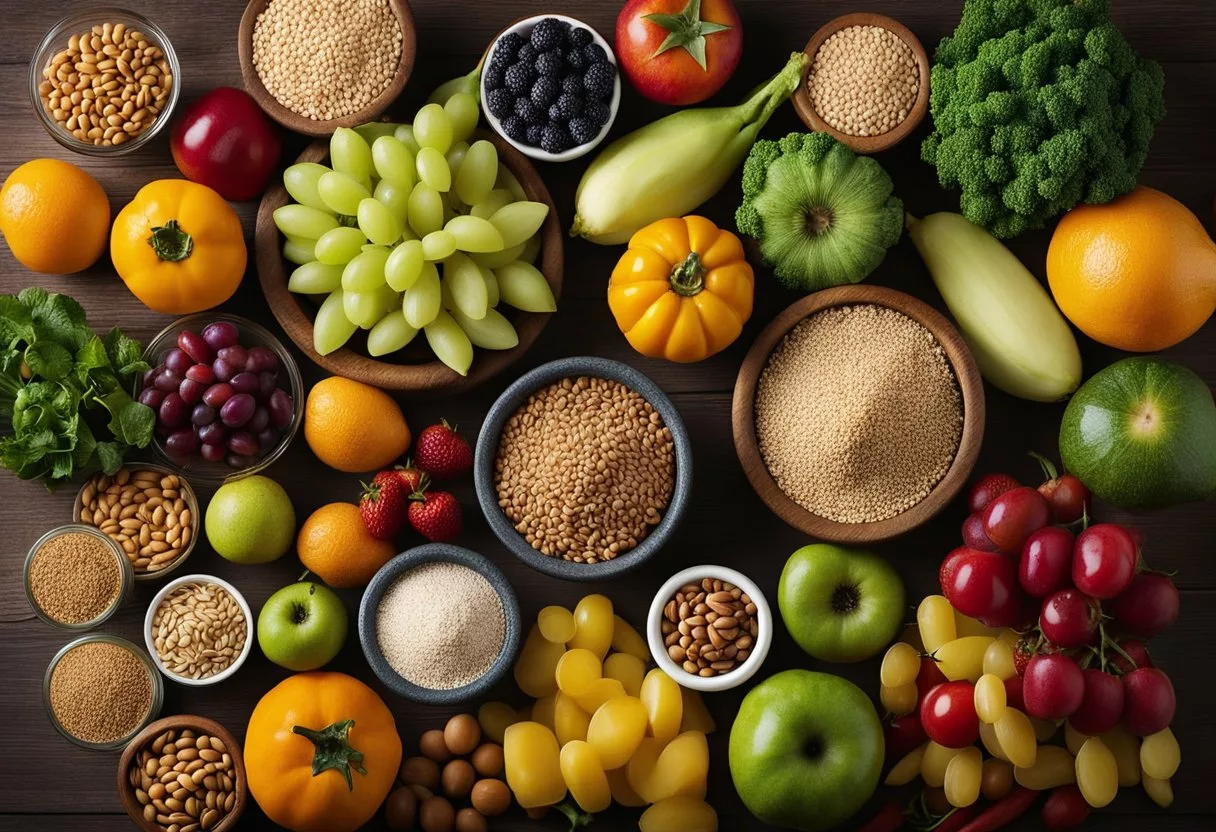
Fruits High in Fiber
Raspberries lead with about 8 grams of fiber per cup, making them a top choice among fruits. Pears and apples follow closely, as they contain both soluble and insoluble fiber. For a tropical twist, a medium-sized banana offers over 3 grams, while oranges provide valuable vitamin C along with fiber. Avocados are unique in this category, high in both fiber and healthy fats.
Vegetables Rich in Fiber
Broccoli and Brussels sprouts are not only high in fiber but also abound in vitamins K and C. Artichokes stand out, with one medium-size offering up to 10 grams of dietary fiber. Root vegetables like sweet potatoes and carrots are also fiber-filled options, containing a range of nutrients including vitamin A, potassium, and antioxidants.
Legumes and Beans
Legumes and beans are powerhouse sources of both protein and fiber. One cup of black beans can contain around 15 grams of fiber. Lentils and chickpeas also offer a significant amount of dietary fiber and protein, making them a great addition to any meal. Including varieties like kidney, navy, and pinto beans in your diet can substantially boost your fiber intake.
Nuts and Seeds
Almonds, pistachios, and seeds like chia are excellent sources of fiber, protein, and healthy fats. A handful of almonds provides more than 3 grams of fiber. Chia seeds are particularly notable; just an ounce can contain around 10 grams of fiber, along with a wealth of omega-3 fatty acids.
Whole Grains and Cereals
Whole grains such as oatmeal, quinoa, and whole-wheat bread are integral for a fiber-rich diet. Barley and brown rice are additional options that offer substantial fiber while being versatile in cooking. Items like whole-grain pasta, rice, and even popcorn can contribute to daily fiber goals and provide sustained energy throughout the day.
Incorporating Fiber into Your Diet
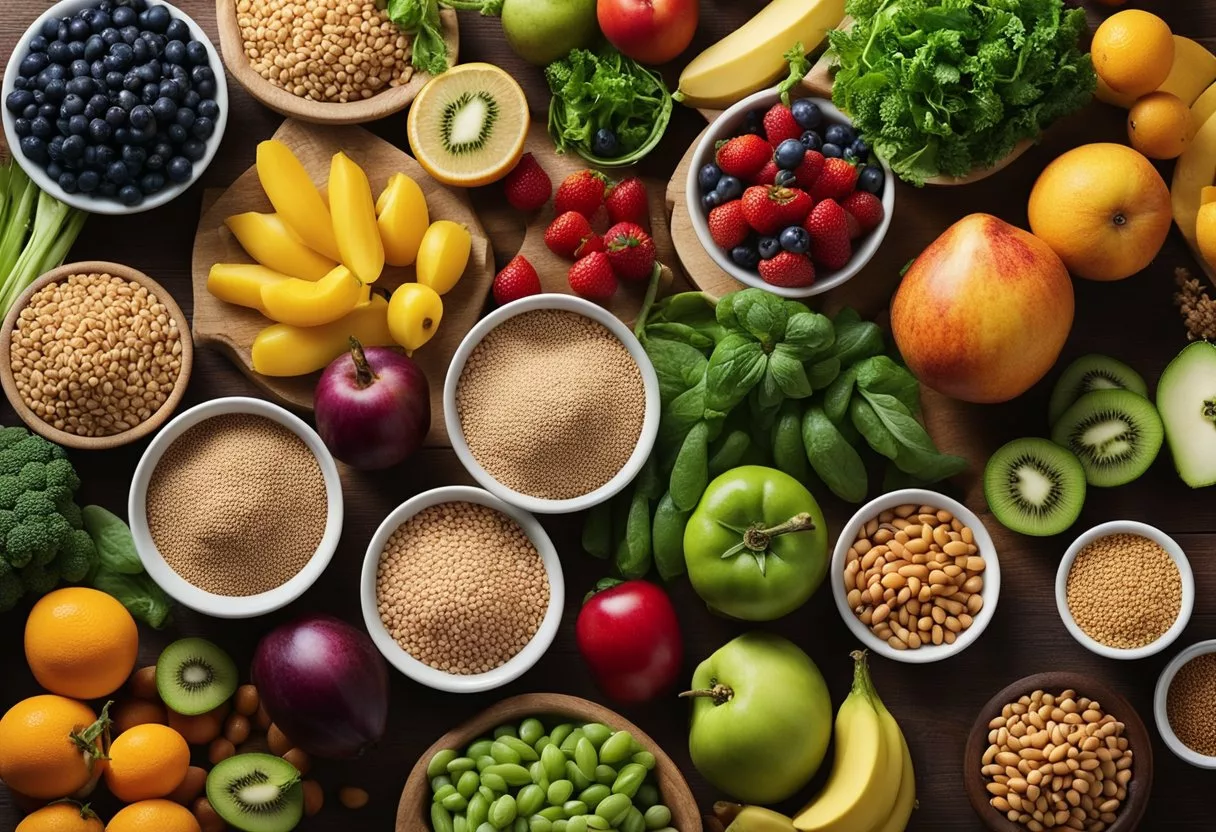
A balanced increase in dietary fiber can support digestion and may contribute to weight control. Adequate water consumption is essential to mitigate the effects of gas and bloating.
Designing a High-Fiber Meal Plan
A high-fiber meal plan emphasizes fruits, vegetables, legumes, and whole grains. Adults should aim for at least 25 to 30 grams of fiber daily as per dietary guidelines. For instance, breakfast could include oatmeal with raspberries, a high-fiber fruit. Lunch and dinner could feature a variety of beans and vegetables, like a lentil salad or a side of steamed broccoli.
The Role of Water Intake
To facilitate fiber’s movement through the digestive system, hydration is key. It is important to drink plenty of water—aim for 8-10 glasses a day—especially when increasing fiber intake to prevent constipation. Sufficient water helps fiber do its job, easing stool passage.
Understanding Portion Sizes and Labels
Awareness of portion sizes and reading nutrition labels accurately are critical for managing fiber intake without excessively increasing calorie count or sodium. Products often display fiber content per serving, making it easier to track daily intake. For packaged foods, check that “whole grain” or a specific whole ingredient is listed as the first component.
How to Gradually Increase Fiber Intake
Start by adding fiber gradually to your diet to reduce potential gas and bloating. Incorporating items like a handful of nuts or seeds, a slice of whole-grain bread, or a serving of legumes daily can help the body adjust. If fiber needs are not met through diet, fiber supplements can be an option, but whole foods are preferable due to the additional nutrient content they offer.
Health Considerations and Precautions

As individuals aim to incorporate more fiber into their diets for its health benefits, like weight loss and improved digestive health, it’s imperative to be aware of the potential side effects and interactions with medications or nutrient absorption. Different life stages also demand varying fiber intake levels to maintain optimal health without adverse effects.
Potential Side Effects of Too Much Fiber
When one increases their fiber intake too rapidly, it can result in digestive discomfort such as bloating and gas. Excess fiber can also lead to constipation if fluids are not adequately consumed. To prevent these issues, a gradual increase in fiber is recommended along with ample fluid intake.
- Symptoms to monitor:
- Intestinal gas
- Diarrhea
- Cramping
- Bloating
Interactions with Medication and Nutrient Absorption
Fiber can interact with certain medications, hindering their efficacy. It’s important to time fiber consumption appropriately if one is on medication. Additionally, high fiber intake might affect the absorption of key minerals like iron, calcium, and magnesium, as well as vitamins such as vitamin C. Consuming a balanced diet is essential to ensure proper nutrient intake.
- Considerations for medication and nutrient absorption:
- Monitor the timing of high-fiber meals with medication dosages.
- Ensure a diverse diet to counteract potential nutrient absorption issues.
Fiber Needs Across Different Life Stages
Fiber requirements vary with age. Children’s growing bodies need adequate fiber for digestive health, while adults might focus on fiber for weight loss or maintaining a healthy weight to combat obesity. In pregnancy, fiber aids in digestion and can help prevent constipation. The elderly may require more fiber but should also be cautious to avoid gastrointestinal discomfort.
- Fiber intake recommendations:
- Children: Specific to age and gender.
- Adults: Aim for a balanced increase aligned with activity levels.
- Pregnancy: Slightly higher fiber requirements for digestive comfort.
- Elderly: Sufficient fiber for digestive health but mindful of potential digestive issues.
Frequently Asked Questions
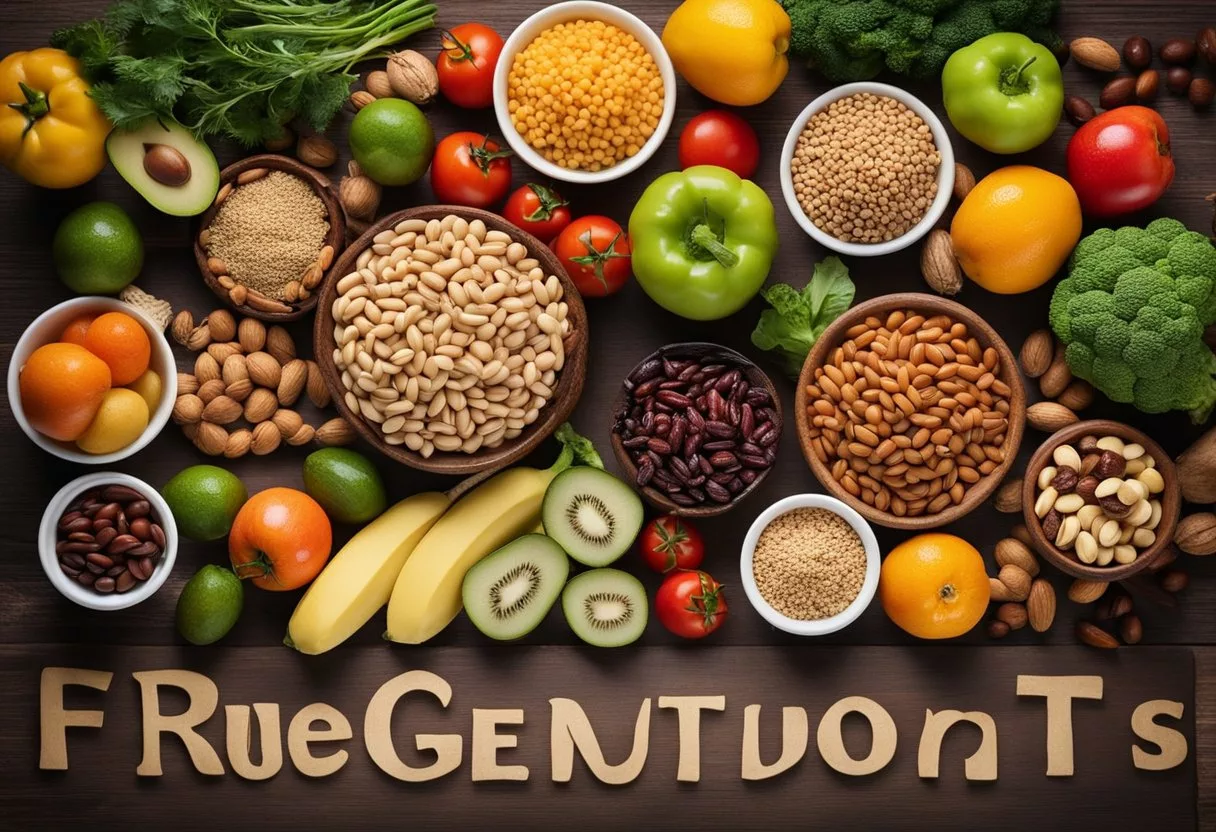
High dietary fiber is essential for digestive health and can aid in weight control. This section addresses frequently asked questions about high-fiber foods and their health benefits.
What are the top sources of insoluble fiber?
Whole grains, bran, nuts, seeds, and the peels of many fruits and vegetables are excellent sources of insoluble fiber. Regularly consuming these foods helps to keep the digestive system running smoothly.
Which foods combine high dietary fiber with low carbohydrate content?
Avocado, chia seeds, almonds, and blackberries offer high dietary fiber with low net carbohydrates, making them suitable for low-carb diets while contributing to fiber intake.
How can someone effectively increase their daily fiber intake?
One can increase their fiber intake by including more fruits, vegetables, whole grains, and legumes in their meals. Gradually adding fiber to the diet and drinking plenty of water helps prevent digestive discomfort.
What fruits are particularly rich in dietary fiber?
Raspberries, pears, apples, and bananas are fruits with high fiber content. Including a variety of these fruits in the diet is an enjoyable way to boost fiber intake.
What are some of the best high-fiber cereal options available?
Cereals made from bran, whole wheat, and oats are typically high in fiber. Reading nutrition labels carefully ensures choosing a cereal that is high in fiber without excessive added sugars.
In what ways does fiber contribute to overall health?
Fiber supports digestive health, helps to maintain a healthy weight, regulates blood sugar levels, and can reduce the risk of cardiovascular disease. It is an important component for maintaining overall health.